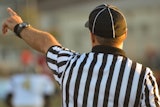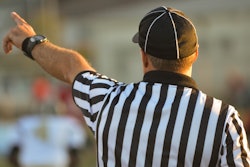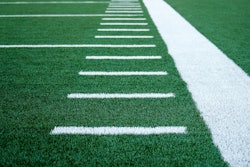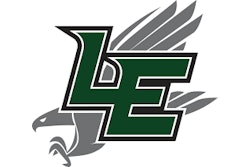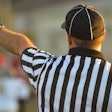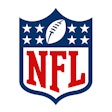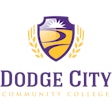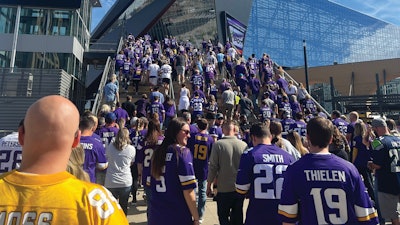
On March 11, 2020, the world came to a screeching halt. The World Health Organization declared COVID-19 a pandemic and irrevocably altered the lives of people around the globe. According to the Centers for Disease Control and Prevention, the WHO made its declaration in light of 118,000 active cases in 114 countries and 4,291 deaths.
On April 11, 2023 — just over three years and millions of deaths after the WHO made its initial declaration — President Joe Biden ended the COVID national emergency in the United States when he signed a bipartisan congressional resolution for it to close. A month later, the head of the WHO declared “with great hope” an end to COVID-19 as a public health emergency.
While there have been many lasting impacts from the pandemic, some sectors of public life have returned to normal. Relevant to our industries, spectators have returned to large sporting events, which is an encouraging sign for operators, athletes and fans alike. That said, the National Center for Spectator Sports Safety & Security at the University of Southern Mississippi thought to leverage hindsight and survey spectators on just how aware and supportive they were of COVID-19 safety and security practices and technologies during the spring and summer of 2021. The report’s findings reveal some interesting insights on how best to create a safe and secure environment for fans even in the absence of a pandemic. Here’s a look at what respondents had to say about venue safety and security in the time of COVID.
Demographic attendance habits
A total of 609 participants completed the survey, representing 528 ZIP codes across the continental United States. The majority were female (58.5 percent), and respondents ranged in age from 18 to older than 75, with most between 25 and 44 (43.7 percent). Most participants indicated white ethnicity/race (71.1 percent), followed by Black or African American (15.3 percent). Income levels ranged from less than $25,000 to more than $200,000, with most (60 percent) falling within a range of $25,000 to $99,000. Respondents also shared their highest level of education, with 39.9 percent having attained a bachelor’s degree or higher.
Approximately 30 percent of respondents attended two sporting events per year, followed closely by five or more events (20.4 percent). The most popular sporting events attended included MLB (49.9 percent), NFL (37.1 percent), and college football (31.9 percent). On average, most participants paid a ticket price of $46 to $55, with 62.4 percent typically paying $65 or less. Forty percent of respondents traveled more than 30 miles to attend a sporting event. The vast majority of participants (81.1 percent) attended sporting events in groups of two to four, and many (42.5 percent) arrived at their event 30 minutes before it started. This coincided with the indicated acceptable amount of time to wait in line before entry to a sporting event, to which nearly all participants (89.3 percent) selected 10 to 30 minutes.
COVID-19 and security concerns
According to the survey, a clear majority (73.2 percent) of those surveyed “strongly agreed” that they considered safety and security measures when choosing to attend a sporting event. Similarly, most participants (77.6 percent) agreed or strongly agreed that they felt safe and secure when attending a sporting event. A greater percentage of participants (87.0 percent) desired to attend a sporting event in 2021 than actually planned to attend (75.4). Individuals who did not plan to attend an event in 2021 selected COVID-19 as the primary reason (74.7 percent), followed by ticket cost (56.7 percent).
Approximately 68 percent of participants received the maximum number of available COVID-19 vaccines, and two-thirds of those not vaccinated did not plan to get vaccinated. Additionally, 28.2 percent of the respondents attended a sporting event without a vaccination. Unvaccinated attendance at a sporting event was highest for those ages 35 to 44 (40 percent).
Participants indicated how important COVID-19-related safety and security practices factored into their decisions to attend future events. Most respondents indicated that a venue’s use of temperature checks, digital health passes (i.e., proof of vaccination or negative test), and enhanced cleaning and sanitizing services were somewhat important or definitely important. More than half of the participants (58.7 percent) indicated that the use of cashless/touchless payment options within the venue was somewhat important or very important, although a high level of neutrality was also present in the survey results.
The most important policy was that venues had a facility certificate of hygiene/disinfectant compliance, with 62.3 percent of respondents indicating that it was somewhat important or very important. This was followed closely by the use of social distancing requirements, which 60.4 percent of participants selected as somewhat important or very important.
Clean accreditation
As the survey related to COVID-specific safety measures, the authors of the report concluded that spectators’ decisions to return to live events in 2021 primarily rested on the venues’ use of enhanced cleaning and sanitizing services. “Regardless of whether the sports industry is facing a global pandemic, venue owners/operators should consider obtaining GBAC-STAR™ Facility Accreditation from the Global Biorisk Advisory Council,” the authors wrote. “GBAC STAR is the cleaning industry’s only outbreak prevention, response and recovery accreditation for facilities and is an overall good public health safety measure for future operations.”
The report also recommended that venue owners and operators should consider implementing cashless/touchless operations, such as installing motion sensors in restrooms, as well as offering digital ticketing, concessions and merchandise ordering.
While the authors acknowledge that COVID-19 itself, as well as subsequent local, state and federal policies, were largely to blame for the drop in attendance at sporting events, they also concluded that spectators’ perceptions of safety at a venue also have an impact on when or whether they attend live sporting events.
“Venue and event security directors can use the results of this research to modify their safety and security policies, procedures and measures to help spectators feel safe at their venues and thus more likely to attend events, which may increase operational revenue,” they wrote. “Future studies can examine changes in spectators’ feelings and general perceptions of safety and security over time and can focus on other specific issues relevant to the industry at the time of survey administration.”
To view the complete report, which was authored by the NCS4’s Stacey Hall, Joslyn Zale and Ryan Kavanaugh, visit: https://ncs4.usm.edu/research/publications/














